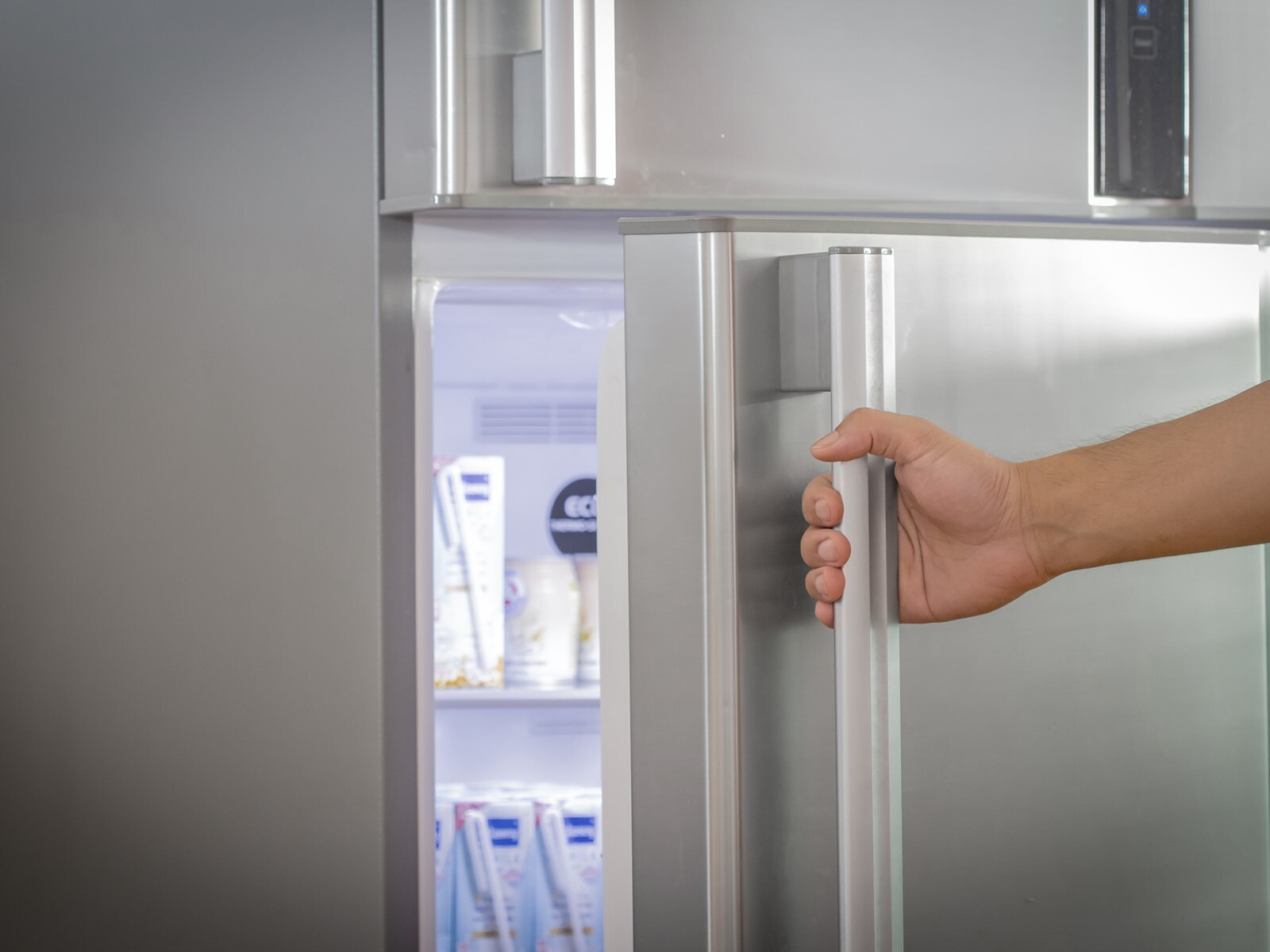Butyl Adhesives and Sealants
What is butyl sealant used for?
Bostik's Butyl adhesives and sealants are composed of butyl rubber and polyisobutylene. Depending on the formula, these products can be solid or liquid at room temperature. Additionally, our butyls adhesives and sealants do not dry or crack over time. This adhesive technology enables efficient waterproofing and sealing solutions.
Butyls come in two categories, adhesives and sealants:
- Butyl adhesives are commonly used to adhere two substrates together. They are used in tapes, flashing, heating, Ventilation, and Air Conditioning (HVAC).
- Butyl sealants are more commonly used for waterproofing or sealing cracks. They are used in waterproofing applications, air leaks, and crack filling between layers.
If you need more information about Butyl adhesives and sealants, don't hesitate to contact an expert.
What are the benefits of Butyl Adhesives and Sealants?
Among the numerous advantages brought by Butyl adhesives and Sealants, we can mention the following features:
- Bitumen-free, solvent-free, lead-free: safe to use and environmentally friendly.
- High tack, high green strength, odor-free at room temperature: enhance workability.
- Can be manually or automatically dispensed: improve production efficiency.
- Butyl will not dry out nor crack or become brittle: long-term durability.
- High-temperature resistance for all climates and conditions (moisture, UV, heat, etc.): high versatility of design and applications.
- No need for primer or pre-heating: easy to use.
- Immediate bond to a wide range of materials: high versatility of design and applications.
For which applications were Butyl Adhesives and Sealants designed?
Insulating Glass
You can use Butyl IG for primary and secondary sealing in Insulating Glass. Butyl Insulating Glass Sealants lead to:
- Thermal efficiency as the sealants' gas retention and warm edge effect determine energy ratings
- Barrier properties as sealants keep moisture out to prolong the service lifespan of IGUs
- Improve safety by avoiding harmful substances for safer homes and workplaces
Learn more about Butyl applications in Insulating Glass Sealant
Formulated with exclusive i-BoostTM technology, Bostik 6000 is an active single-part hot melt sealant that offers enhanced performance, productivity and durability over existing best-in-class IGU sealant options.
Building & Construction
Butyl adhesives and sealants are ideal for roofing applications because they possess:
- Superior heat stability and aging behaviour
- Versatility enables them to be used as flashing tapes at intersecting roof points, ridges, slopes, and other vertical areas, as well as windows, doors, and pipes, and repair.
Learn more about Butyl applications in Building and Construction:
Bostik 1143 is the reference of roofing butyl sealant for ridges and hips applied from drum melter.
Home Appliances
Bostik's butyl adhesive is appreciated in home appliances for:
- Electrically and heat transfer capacity for home appliances over a wide temperature range.
- Good adhesion to all metal, powder-coated, and painted surfaces.
Learn more about Butyl applications in Home Appliances:
Kontaktmassa X is a 1-component butyl based thermally conductive mastic for appliance applications. It is a mastic that is stable over a wide temperature range and features a good adhesion to all metal surfaces, powder coated and painted surfaces.
Automotive
With a Butyl adhesive technology, you can increase production speeds due to room temperature application and direct sealing options (applied at OEM plant) and enhance process flexibility with manual or high-speed automatic application abilities. Butyl adhesives are also appreciated for their durabilities and smart properties (thermal, density).
For Battery Pack, Bostik Butyl Technology can offer:
- Ease of service with removing and resealing the surface
- Air tight instant seal between substrates
- Good aging resistance under warm and humid conditions
- High process efficiency in assembly
Learn more about Butyl Applications in Automotive:
General Transportation
Butyl can be used in transportation
- Can bond various substrates such as metal, glass, plastic, and wood
- Good vibration dampening
- Superior age resistance
- Flexibility
Learn more about Butyl Applications in General Transportation:
Frequently Asked Questions about Butyl Adhesives and Sealants
You can use drums or sausages for high throughput applications with limited manual handling. Consider using tapes available on many substrates (PP, PET, non-woven) for smaller-scale or manual applications.
Our butyl adhesives have a high temperature performance range. Once the adhesive is applied, it can withstand temperatures up to 90°C. Depending on your needs Bostik experts work directly with you to determine which sealant of Bostik extensive range can be used based on the temperature range for a given application.
The main benefits of Butyl vs. Bitumen are the following:
- Pressure Sensitive Adhesive: Butyl provides an immediate bond to a wide range of building materials. It is easily applied, with no pre-heating nor primer required. There is no special installation equipment required. Finally, it's highly comfortable to fit all building configurations.
- Non-hardening Mastic: Butyl forms a soft, resilient compression seal. It allows movement due to expansion-contraction. Moreover, Butyl will not dry out (crack) or become brittle, having a virtually unlimited storage life.
- Chemically Inert: Butyl is safe to use and environmentally friendly (no curing time and solvent evaporation). It has high resistance to alkalis, acids, and salts.
- Retains Elasticity: Butyl is appreciated for its versatility for all climates and conditions: -30°C to 120°C (short term). Butyl also retains shape at high temperatures and tack at low temperatures.
If you want to know more, contact our experts.
| Feature | Butyl Rubber | Silicone Rubber |
|---|---|---|
| Water Resistance | Excellent, highly impermeable | Good, but can degrade over time |
| Temperature Resistance | Moderate (-40°C to 120°C) | Superior (-60°C to 250°C) |
| Flexibility | Good, but less elastic than silicone | Highly flexible and stretchable |
| Durability | Long-lasting, resistant to aging | Resistant to UV, ozone, and extreme weather |
| Chemical Resistance | Moderate, resists acids and bases | Excellent, resists many chemicals |
| Adhesion | Strong initial tack, great for sealing, easy to apply | Requires curing, but forms a strong bond |
Start by applying gentle heat with a hairdryer to soften the butyl sealant, keeping the heat source 3-6 inches away from the surface. This makes the removal process significantly easier and helps preserve the underlying material.
For stubborn areas, use a plastic putty knife or scraper to carefully lift the edges. Working in small sections prevents damaging the surface while maintaining a clean waterproof seal for future applications.
A mixture of warm water and mild soap can help loosen remaining residue. Apply the solution with a clean cloth, allowing it to sit briefly before wiping. For particularly challenging spots, specialized adhesive removers provide effective results without harming most surfaces.
Remember to test any cleaning solution on a small, inconspicuous area first to ensure surface compatibility.
| Feature | Butyl Insulating Glass | Butyl Adhesives & Sealants |
|---|---|---|
| Primary Use | Used in insulating glass units (IGUs) to improve thermal efficiency | Used for bonding and sealing in various industries |
| Function | Acts as a primary or secondary sealant to prevent moisture ingress | Provides adhesion, waterproofing, and flexibility |
| Material Composition | Made from butyl rubber with high gas retention properties | Contains butyl rubber and polyisobutylene, offering long-term durability |
| Applications | Used in windows, facades, and architectural glazing | Applied in automotive, construction, and industrial sealing |
| Key Benefits | Enhances energy efficiency, sound insulation, and longevity | Provides strong adhesion, weather resistance, and easy application |
Featured Products: Butyl Adhesives and Sealants

Bostik 6000

Kontaktmassa X

Bostik 5000





